By Jay Carlisle, IBO Research Director
The Cassia Crossbill (Loxia sinesciuris), restricted to the Albion Mountains and South Hills in southern Idaho, is Idaho’s only endemic bird species and has an estimated population size of less than 6,000 individuals (Behl and Benkman 2018).
With less than 25,000 acres of potentially suitable habitat almost all within the Sawtooth National Forest, the Cassia Crossbill is increasingly recognized as a species under threat from wildfires and climate warming.
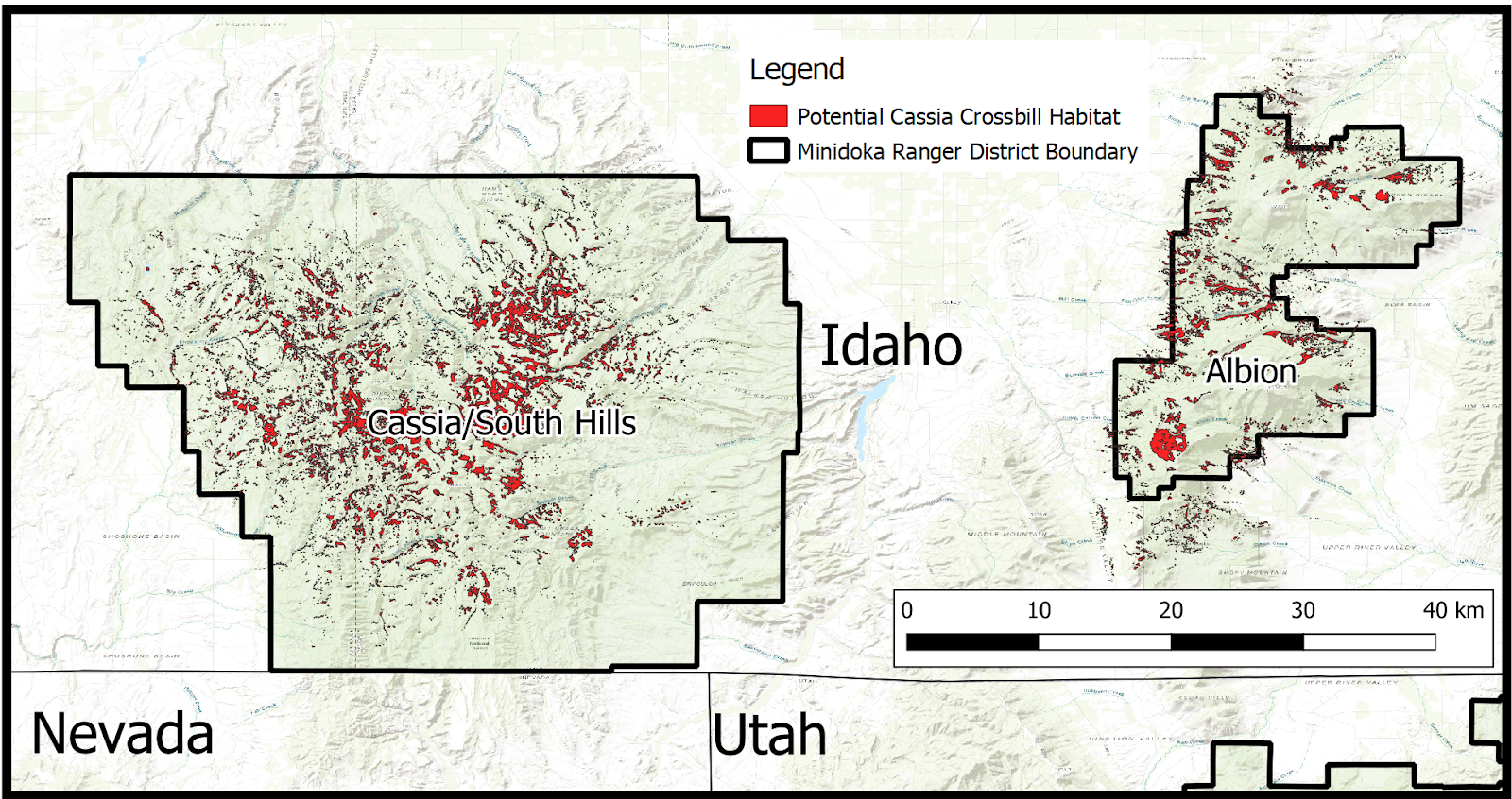
Research by Dr. Craig Benkman and students from the University of Wyoming has helped identify potential factors influencing population size in this species. Likely threats include large wildfires and increasing high summer temperatures from climate warming. Both of these factors cause lodgepole cones to open prematurely. This means that instead of storing seeds for decades where primarily only crossbills can access them, the cones drop their seeds to the ground where they are quickly eaten up by other species.
Dr. Benkman expects these impacts may decrease the Cassia Crossbill population size by as much as 75% over the next few years.
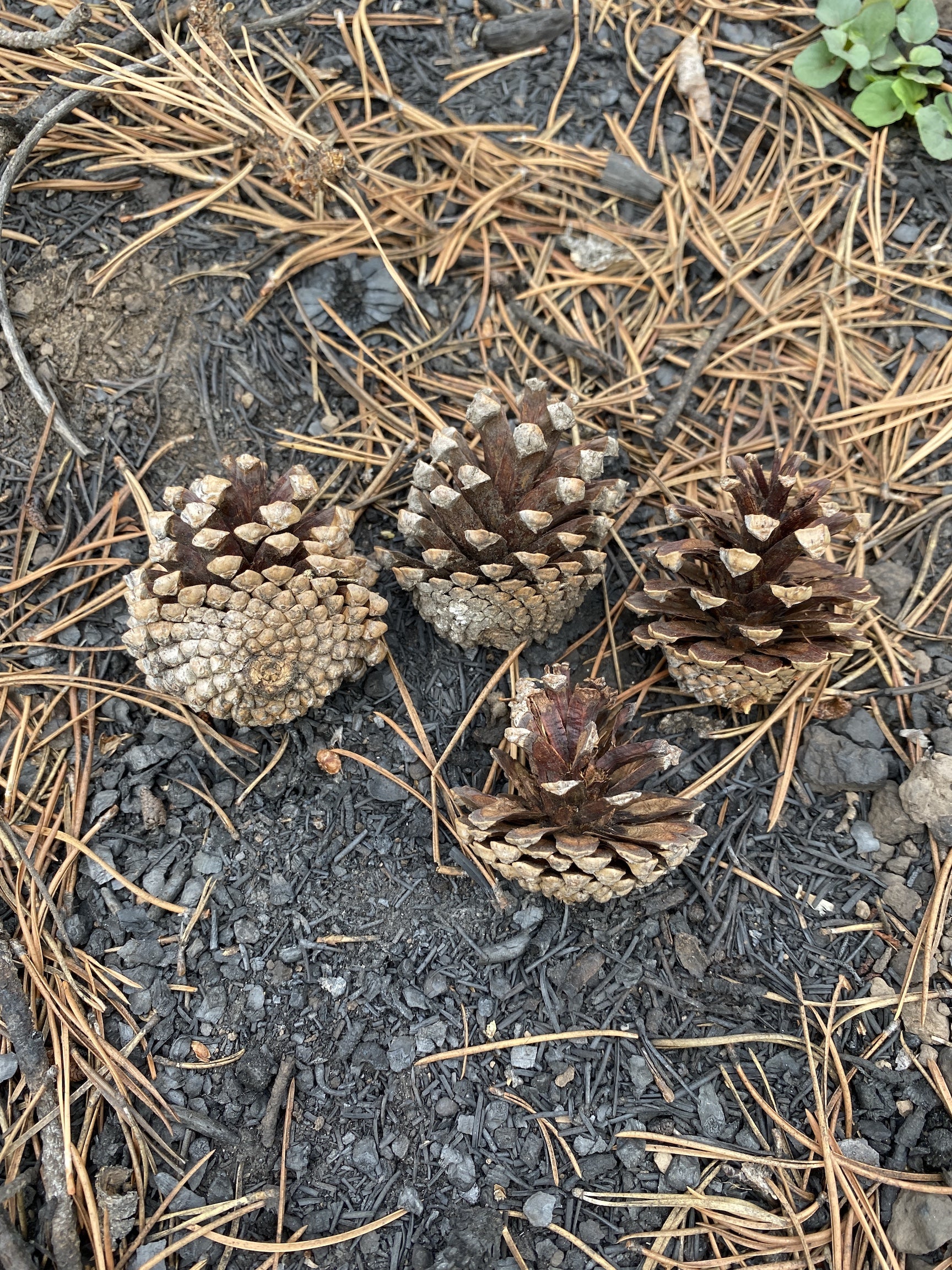
Cutting of lodgepole pines (Pinus contorta) for firewood is another potential threat since this is the tree species Cassia Crossbills rely on for food and nesting.
These findings can help inform research and monitoring needs as well as habitat and recreation management efforts designed to safeguard Cassia Crossbill habitat.
Early in 2021 we formed an informal but very engaged “working group” consisting of Boise State University’s Intermountain Bird Observatory, Idaho Department of Fish and Game, Prairie Falcon Audubon Society, the Shoshone-Bannock Tribes, University of Wyoming, U.S. Forest Service (Sawtooth National Forest and the Intermountain Region), and U.S. Fish and Wildlife Service.
One of our first objectives was to organize the most intensive survey effort for Cassia Crossbills to date.
Thanks to funding support from Idaho Department of Fish and Game, University of Wyoming, U.S. Forest Service, and the U.S. Fish and Wildlife Service, we conducted standardized crossbill surveys, vegetation assessments, and cone counts at 224 survey points across the entire range from late July to mid-October.
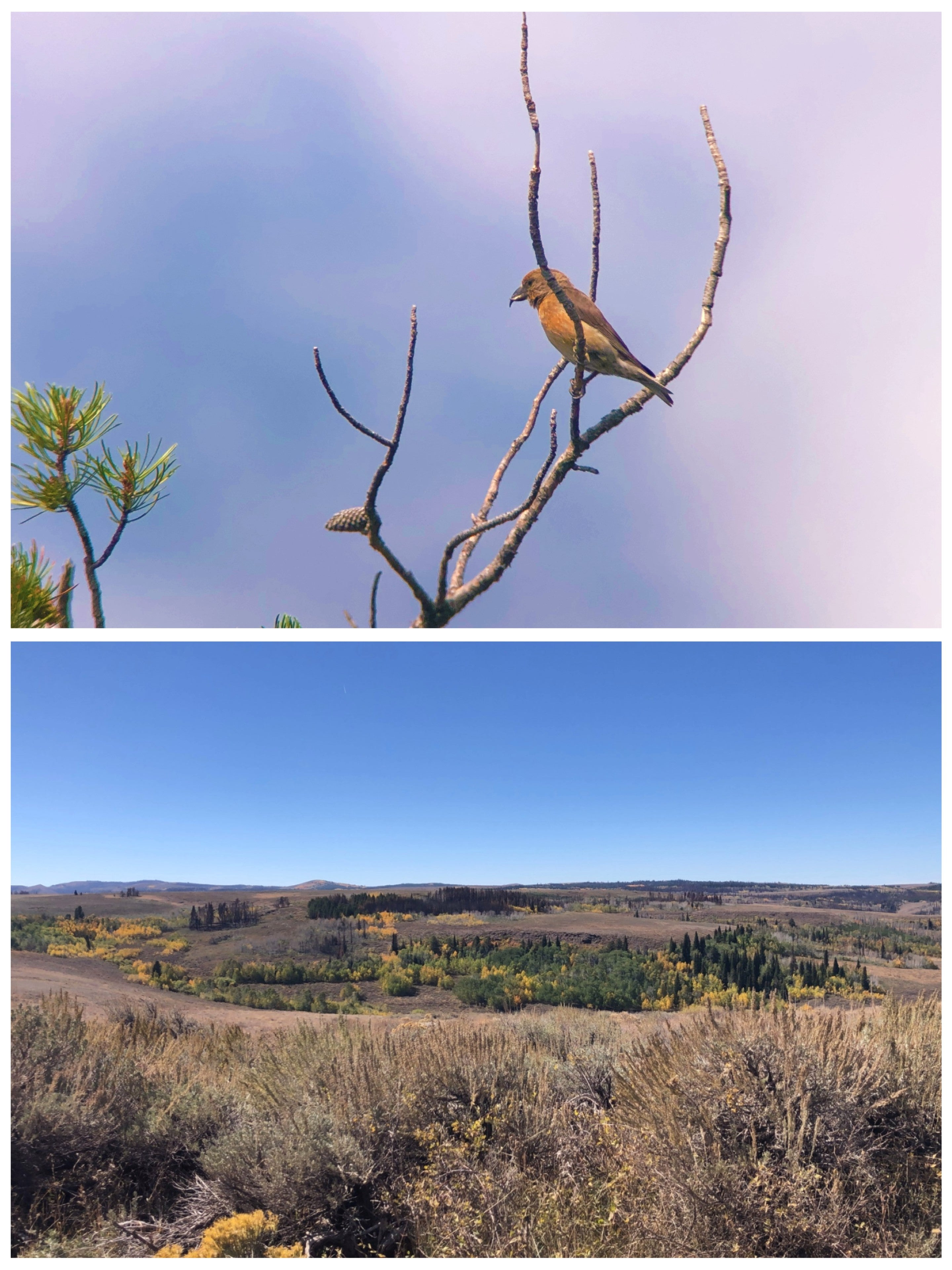
We were fortunate to recruit 5 highly experienced biologists to help implement these surveys in 2021, first in late July and then again in late September/early October. We thank Jenna Boisvert and Kendall Watkins for doing both early and late-season surveys, and Adam Bradley, Bret Davis, and David McGuire for their help with surveys in 1 of the 2 periods. They all enjoyed exploring a fascinating landscape of patchy forest habitat interspersed with open shrubby/grassy areas.
In addition to crossbills galore, they saw loads of wildlife including an incredible number of moose!
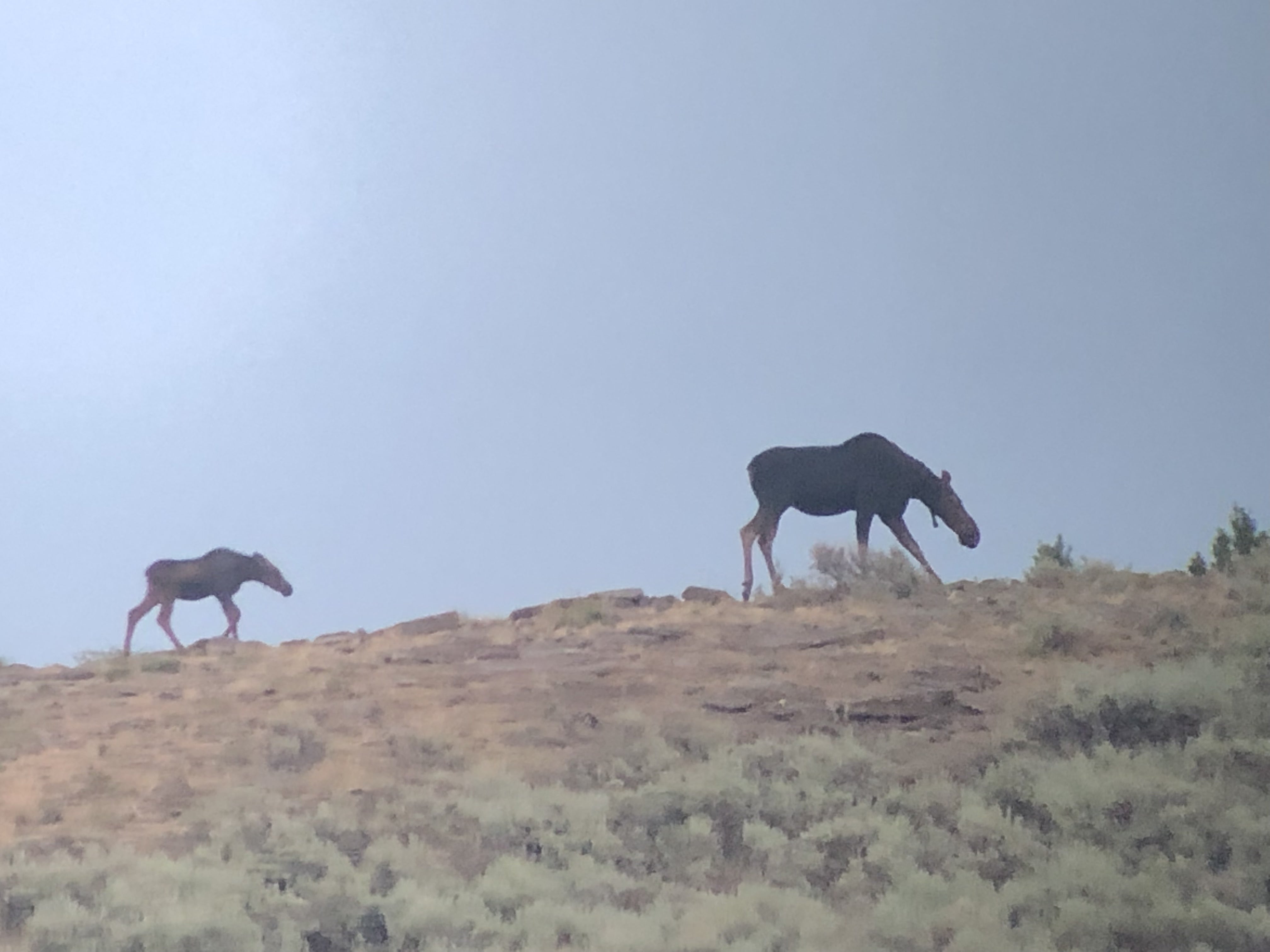
The patchy nature of the forests in the Albion Mountains and South Hills was made more interesting by the mosaic of intensely burned, lightly burned, and unburned habitats left by the Badger fire. As Rob explored in IBO’s 2020 e-newsletter, fire is a scary thing to behold but its effects aren’t all bad. In fact, many species thrive after fire and it can help forests regenerate. For example, crossbills need mature, cone-bearing lodgepole pines now and in the near future. They also need young forests that are just starting to grow that will eventually provide suitable habitat in 30-50+ years when the patches the crossbills are currently using have died or burned.
The fear is that a combination of warming temperatures and thick understories mean we’ll continue to see bigger and bigger fires that could consume much of the currently suitable habitat.
Fortunately the Sawtooth National Forest is working feverishly to plan and conduct thinning projects and other restoration activities that would act to better contain fires to smaller areas and ideally maintain crossbill habitat.
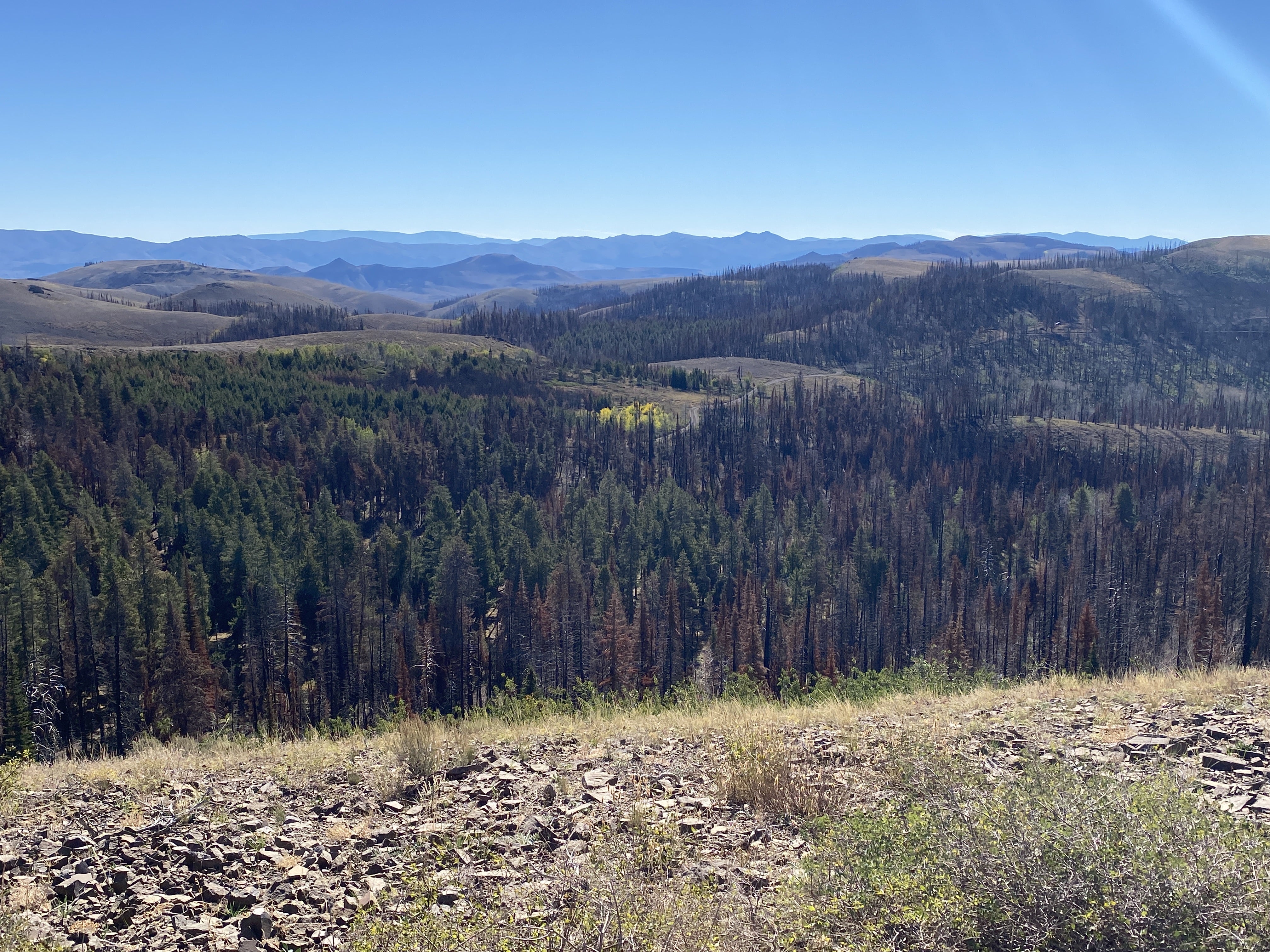
We’ll be analyzing the data this winter and hope to repeat the same survey effort in 2022. We can then use this data to design a robust long-term monitoring program for Cassia Crossbills and the habitat upon which they rely. The timing of our intensive survey effort gives us a great opportunity to examine crossbill use of these forest types immediately after a big fire, and ideally for years to come so we can measure how they respond in real time. Longer-term monitoring will also allow for us to examine potential responses to habitat restoration efforts by the Sawtooth National Forest and partners. We know from Dr. Benkman’s monitoring from 2003-2018 the population of Cassia Crossbills has shrunk and then recovered at least once. Thus, if numbers do indeed fall over the next few years, it won’t necessarily be catastrophic – especially if we can avoid additional massive fires in the coming years. Fingers crossed!
This article is part of our 2021 end of the year newsletter! View the full newsletter here, or click “older posts” at the end of the page to read the next article.
Make sure you don’t miss out on IBO news! Sign up to get our email updates.